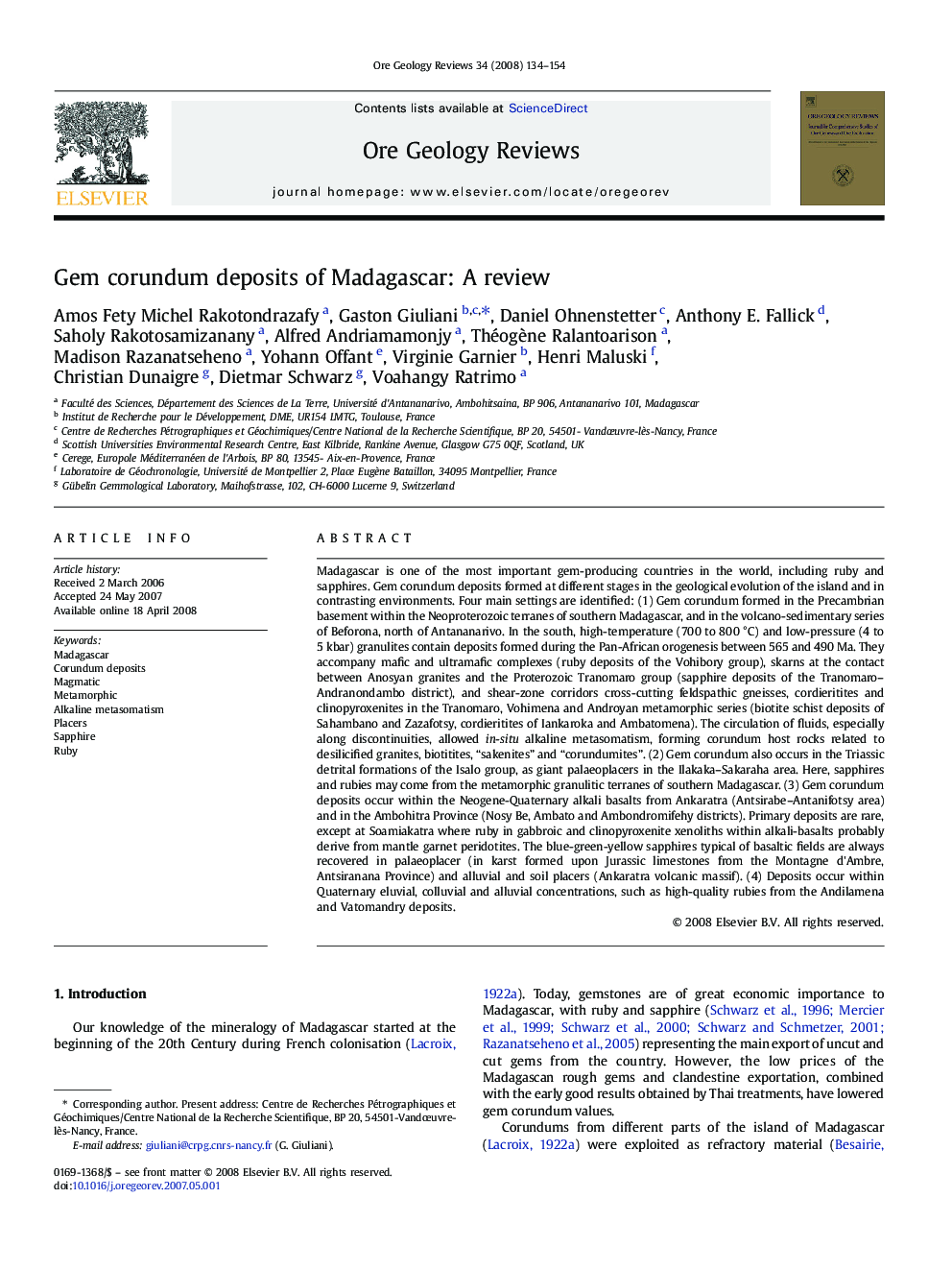| کد مقاله | کد نشریه | سال انتشار | مقاله انگلیسی | نسخه تمام متن |
|---|---|---|---|---|
| 4697831 | 1637266 | 2008 | 21 صفحه PDF | دانلود رایگان |

Madagascar is one of the most important gem-producing countries in the world, including ruby and sapphires. Gem corundum deposits formed at different stages in the geological evolution of the island and in contrasting environments. Four main settings are identified: (1) Gem corundum formed in the Precambrian basement within the Neoproterozoic terranes of southern Madagascar, and in the volcano-sedimentary series of Beforona, north of Antananarivo. In the south, high-temperature (700 to 800 °C) and low-pressure (4 to 5 kbar) granulites contain deposits formed during the Pan-African orogenesis between 565 and 490 Ma. They accompany mafic and ultramafic complexes (ruby deposits of the Vohibory group), skarns at the contact between Anosyan granites and the Proterozoic Tranomaro group (sapphire deposits of the Tranomaro–Andranondambo district), and shear-zone corridors cross-cutting feldspathic gneisses, cordieritites and clinopyroxenites in the Tranomaro, Vohimena and Androyan metamorphic series (biotite schist deposits of Sahambano and Zazafotsy, cordieritites of Iankaroka and Ambatomena). The circulation of fluids, especially along discontinuities, allowed in-situ alkaline metasomatism, forming corundum host rocks related to desilicified granites, biotitites, “sakenites” and “corundumites”. (2) Gem corundum also occurs in the Triassic detrital formations of the Isalo group, as giant palaeoplacers in the Ilakaka–Sakaraha area. Here, sapphires and rubies may come from the metamorphic granulitic terranes of southern Madagascar. (3) Gem corundum deposits occur within the Neogene-Quaternary alkali basalts from Ankaratra (Antsirabe–Antanifotsy area) and in the Ambohitra Province (Nosy Be, Ambato and Ambondromifehy districts). Primary deposits are rare, except at Soamiakatra where ruby in gabbroic and clinopyroxenite xenoliths within alkali-basalts probably derive from mantle garnet peridotites. The blue-green-yellow sapphires typical of basaltic fields are always recovered in palaeoplacer (in karst formed upon Jurassic limestones from the Montagne d'Ambre, Antsiranana Province) and alluvial and soil placers (Ankaratra volcanic massif). (4) Deposits occur within Quaternary eluvial, colluvial and alluvial concentrations, such as high-quality rubies from the Andilamena and Vatomandry deposits.
Journal: Ore Geology Reviews - Volume 34, Issues 1–2, September 2008, Pages 134–154